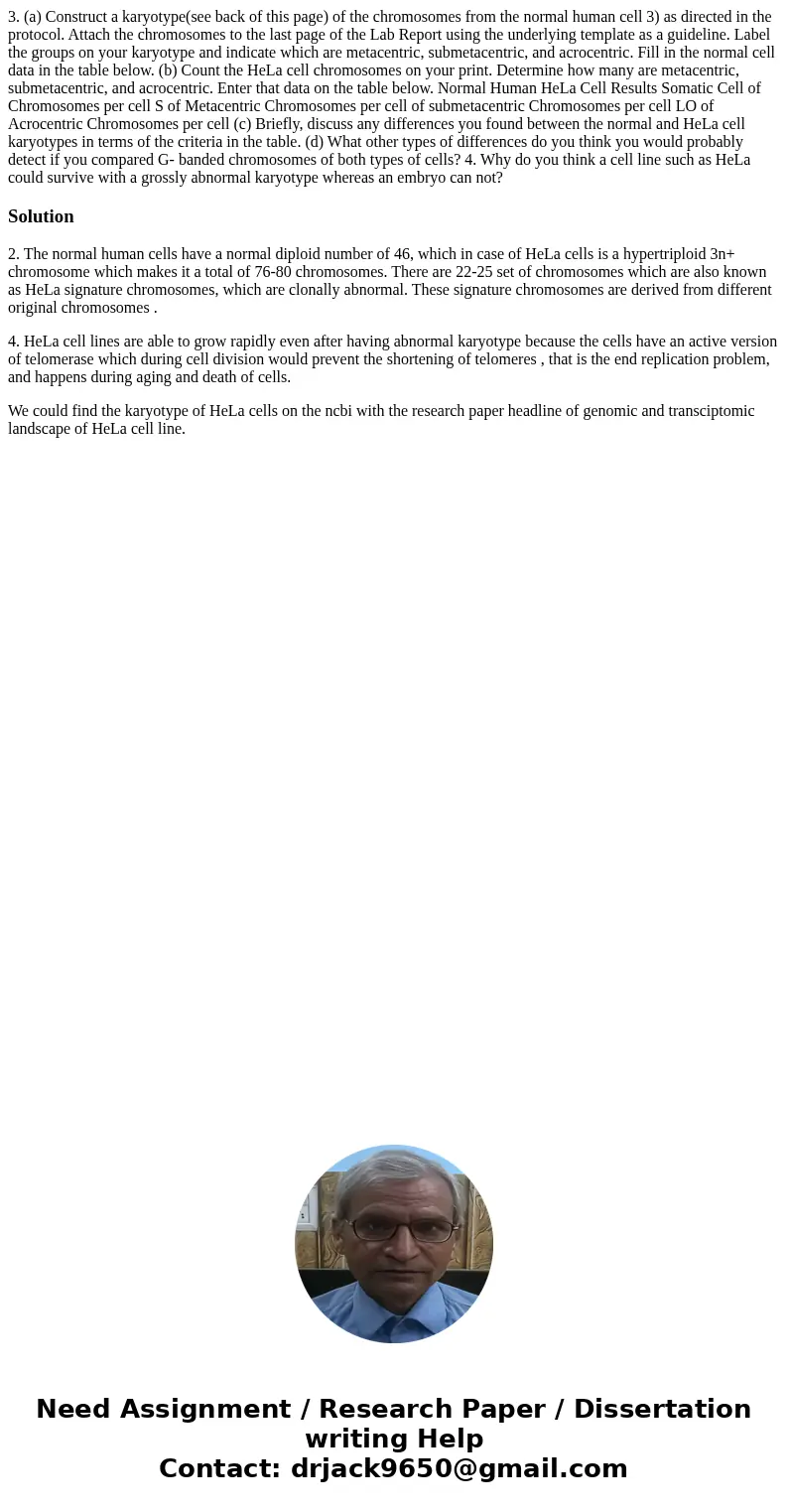3. (a) Construct a karyotype(see back of this page) of the chromosomes from the normal human cell 3) as directed in the protocol. Attach the chromosomes to the last page of the Lab Report using the underlying template as a guideline. Label the groups on your karyotype and indicate which are metacentric, submetacentric, and acrocentric. Fill in the normal cell data in the table below. (b) Count the HeLa cell chromosomes on your print. Determine how many are metacentric, submetacentric, and acrocentric. Enter that data on the table below. Normal Human HeLa Cell Results Somatic Cell of Chromosomes per cell S of Metacentric Chromosomes per cell of submetacentric Chromosomes per cell LO of Acrocentric Chromosomes per cell (c) Briefly, discuss any differences you found between the normal and HeLa cell karyotypes in terms of the criteria in the table. (d) What other types of differences do you think you would probably detect if you compared G- banded chromosomes of both types of cells? 4. Why do you think a cell line such as HeLa could survive with a grossly abnormal karyotype whereas an embryo can not?
2. The normal human cells have a normal diploid number of 46, which in case of HeLa cells is a hypertriploid 3n+ chromosome which makes it a total of 76-80 chromosomes. There are 22-25 set of chromosomes which are also known as HeLa signature chromosomes, which are clonally abnormal. These signature chromosomes are derived from different original chromosomes .
4. HeLa cell lines are able to grow rapidly even after having abnormal karyotype because the cells have an active version of telomerase which during cell division would prevent the shortening of telomeres , that is the end replication problem, and happens during aging and death of cells.
We could find the karyotype of HeLa cells on the ncbi with the research paper headline of genomic and transciptomic landscape of HeLa cell line.

 Homework Sourse
Homework Sourse